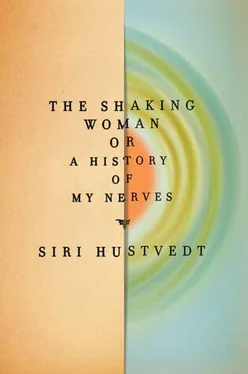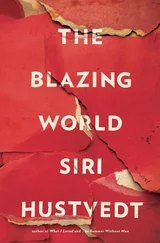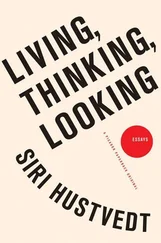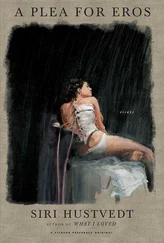Not long after he published Studies on Hysteria with Breuer, Freud embarked on what was later called his Project for a Scientific Psychology, an attempt to attach his insights about how the mind works to his knowledge of neurology and create a biological model founded on brain stuff — neurons. After a period of feverish writing, he realized that not enough was known about neural processes to produce such a map, and he put his Project aside. The father of psychoanalysis then made his fateful turn toward a purely psychological explanation of the mind, although he never abandoned the idea that sometime in the future, scientists would be able to ground his ideas in actual brain functions. In his history of psychoanalysis, Revolution in Mind, George Makari offers a pithy assessment of the problem Freud and many others working in neurology, psychology, and biophysics faced: “One could not glibly say a nerve housed a word or an idea.” 14Freud had thoughts about how this connection worked, but he couldn’t begin to prove he was right.
LET US SAY THAT after my imaginary visit to the neurologist turned up nothing of interest, I decided to see a psychoanalyst. Although American psychiatry was once heavily influenced by psychoanalysis, the two disciplines have grown further and further apart, especially since the 1970s. Many psychiatrists have little or no knowledge of psychoanalysis, which has become increasingly marginalized in the culture. Large numbers of American psychiatrists now leave most of the talk to social workers and stick to writing prescriptions. Pharmacology dominates. Nevertheless, there are still many psychoanalysts practicing around the world, and it’s a discipline I’ve been fascinated by since I was sixteen and first read Freud. I’ve never been in psychoanalysis, but at a couple of junctures in my life I’ve considered becoming an analyst, and in order to do that I would have to be analyzed myself. I was in psychotherapy once, briefly, and it was very helpful, but I’ve come to understand that some part of me is afraid of an analysis. That fear is difficult to articulate because I’m not sure where it comes from. I have a vague sense that there are hidden recesses of my personality that I am reluctant to penetrate. Maybe that’s the part of me that shook. The intimacy of the dialogue between analyst and patient is also rather frightening. Frankly, saying everything on my mind has a terrifying ring to it. My imaginary analyst is a man. I choose a man because he would be a paternal creature, an echo of my father, who is the ghost somehow involved in my shaking.
After listening to my story, my analyst would surely want to find out about my father’s death and my relationship to him. My mother would come into the dialogue as well, and no doubt my husband and daughter and sisters and all the people who are important to me. We would talk, and through the exchange the two of us would hope to discover why a speech I delivered in front of a pine tree turned me into a shivering wreck. Of course, it has to be acknowledged that talking wasn’t my problem. Even while I was in the grip of the thing, I was fluent. My pathology lay somewhere else, beneath or to the side of language, depending on the spatial metaphor. The psychoanalytic word for my difficulty might be repression. I had repressed something, which had then burst out of my unconscious as a hysterical symptom. Indeed, my dilemma would look classic to a Freudian analyst. I would, of course, tell my phantom analyst that I had visited a neurologist and wasn’t an epileptic, and from that moment on, he wouldn’t spend much time worrying about my brain . Although Freud was fascinated by neurons, my analyst would forget about them and instead help me dig into my story, and between us we would find a way to retell it in order to cure me of my symptom. On my way to a cure, I would fall in love with my analyst. I would go through transference. Through that love, which might also turn into hate or indifference or fear, I would transfer to him the feelings I had or have for my father, my mother, or my sisters, and he, in turn, would have a countertransference, shaped by his own personal story. We would find ourselves in the grip of ideas, as well as emotions. In the end — there is supposed to be an end — we would have a story about my pseudoseizure, and I would be cured. That is, at least, the ideal narrative of an analysis, which is a peculiar form of storytelling. Freud himself noted the oddness of the enterprise in Studies on Hysteria :
Like other neuropathologists, I was trained to employ local diagnoses and electro-prognosis, and it still strikes me as strange that the case histories I write should read like short stories and that, as one might say, they lack the serious stamp of science. I must console myself with the reflection that the nature of the subject is evidently responsible for this, rather than any preference of my own. The fact is that local diagnosis and electrical reactions lead nowhere in the study of hysteria, whereas a detailed description of mental processes such as we are accustomed to find in the works of imaginative writers enables me, with the use of a few psychological formulas, to obtain at least some kind of insight into the course of that affection. 15
As a scientist, Freud felt a little queasy about sounding like a fiction writer. Over time, his thoughts about the psychic apparatus would both change and evolve, but he would never be able to sink his theories into the nervous system, where he knew its processes originated. Aphasia was an illness with an identified physiological ground. Damage to particular parts of the brain caused language problems. When Freud wrote on aphasia, the French scientist Paul Broca and the German scientist Carl Wernicke had already done their groundbreaking work that localized language centers in the brain’s left hemisphere. Hysteria, however, was an illness without brain lesions. The work of the eminent French neurologist Jean-Martin Charcot, whom Freud knew, translated, studied under, and was deeply influenced by, had made this clear. Working in the Salpêtrière Hospital in Paris, Charcot, like countless physicians before him, struggled to distinguish epileptic seizures from what he called “hystero-epilepsy.” Because some genuine epilepsies could also occur without lesions in the brain, a fact discovered through autopsy, Charcot had to make the distinction between the two illnesses on clinical grounds by carefully observing his patients. He categorized diseases like hysteria, which were not caused by anatomical lesions, with the “neuroses.” He considered hysteria a neurological, organic disease, maintained that it had a hereditary basis, and said it wasn’t unique to women. Men could be hysterical, too.
Charcot became interested in the psychological dimension of hysteria when he noticed that a severe fright or powerful emotion could be linked to its symptoms. In such cases, Charcot believed, the shock created an autosuggestion, a form of self-hypnosis in the patient that remained outside his awareness. For example, one of the neurologist’s patients, diagnosed with traumatic male hysteria, was a blacksmith who had suffered a burn to his hand and forearm and then weeks later developed contractures in the same part of his body. The theory was that trauma could create an idea that acted on a person’s already vulnerable nervous system to create the symptom: a fit; a paralysis; the inability to walk, hear, or see; fugues; or somnambulisms. Furthermore, a doctor could produce the same symptom by hypnotizing the patient and suggesting to him that his hand was paralyzed. Autosuggestion and hypnotic suggestion activated the same physiological areas and so were two forms of the same process. For Charcot, the very fact that a person could be hypnotized meant that he or she was a hysteric. Despite his interest in trauma, Charcot remained committed to a physiological explanation of hysteria. 16
Читать дальше












